2017工作室课题研究奖项——“虚构”的开罗
2017 STUDIO PRIZE—Studio Prize: Real Fictions Cairo
由专筑网王子铭,李韧编译
宾夕法尼亚大学的三年级硕士研究生设计了适应埃及开罗现有基础设施的改造计划,形成新的公共空间,并使历史遗址在拥挤的城市中重获新生。
Third-year master's students from the University of Pennsylvania developed schemes to adapt existing infrastructure in Cairo, Egypt, to create new public spaces and recapture lost sites in the crowded city.
By NATE BERG

工作室简介:为了解决开罗严重的交通拥堵和公共空间不足的问题,这个成立了三年的大师工作室提出了可以将现有的交通基础设施改造为城市便利设施的设想。其中特别针对中心区边缘与桥梁交汇的地带,要求学生对建筑环境提出微妙、但有意义的解决方案。
调查:开罗的城市问题十分普遍。宾夕法尼亚大学设计学院副教授Ferda Kolatan说:“因为交通拥堵、较差的基础设施规划、缺乏公共空间与公园等问题,让人感到开罗是一个完全令人窒息的城市,而当地的步行系统也是一个后来才有的补救措施”。因此,埃及文化部要求Kolatan在开罗构思一个能够解决以上问题的设计方案。
在与当地居民、政治家和规划师交谈之后,工作室成员决定重点关注尼罗河上的一座桥梁与城市交汇的三个结点。在访问埃及首都之际,学生们对这些地区进行调研,并记录下现状照片和视频。这些资料的视觉效果是他们项目的基础,其中每个细节的功能性都需要重新考虑。
改造的目标是将现有基础设施与新建筑元素相结合。独特的是,工作室建议学生将这些想法以抽象的方式来表达。Kolatan说:“我们需要提供一种适合不同规模的可实施策略,而不是提出具体的解决方案。”
评委在颁奖时这样评价道:“这不仅仅是一个探索,还是一个涉及解决经济问题的重要课题,在这个课题中还需要考虑城市的不同部分该如何有效连接。”
Studio Brief: To address Cairo’s severe traffic gridlock and lack of quality public space, this third-year master’s studio developed tactical designs that could transform the city’s existing transportation infrastructure into urban amenities. Focusing specifically on areas where bridges meet the edge of downtown, the students were tasked with proposing subtle but meaningful interventions to the built environment.
Investigation: Cairo has no shortage of urban challenges. “It’s a city that is completely suffocating because of traffic problems, bad infrastructure planning, no public spaces, no parks,” says Ferda Kolatan, an associate professor at the University of Pennsylvania, School of Design. “The pedestrians are a complete afterthought.” That’s part of the reason Kolatan was asked by the Egyptian Ministry of Culture in Cairo to develop a studio that could come up with solutions.
After talking with local residents, politicians, and planners, the studio decided to focus on three sites where a bridge over the Nile touches down in the city. On a trip to the Egyptian capital, students visited these areas and took photos and videos that they used to create almost-hyperrealistic renderings of the current conditions. These visuals are the basis for their projects—each of which rethinks use and usability.
The goal was to hybridize existing infrastructure with new architectural elements. Uniquely, the studio called on students to present these ideas as decontextualized “objects.” “Rather than suggest specific solutions, we wanted to present prototypes that can be implemented at different scales,” Kolatan says.
The jury cited this approach in awarding the prize: “It’s not just formal exploration, it’s tied to a brief that addresses economy and how different aspects of the city relate to each other,” said juror V. Mitch McEwen.
学生作品|Student Work
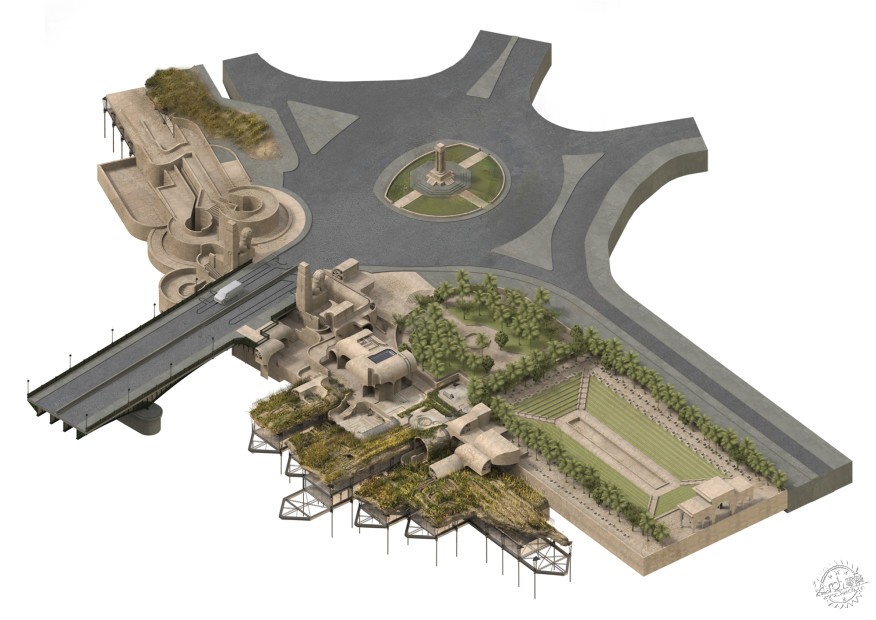
Alexander Tahinos and Angela Huang
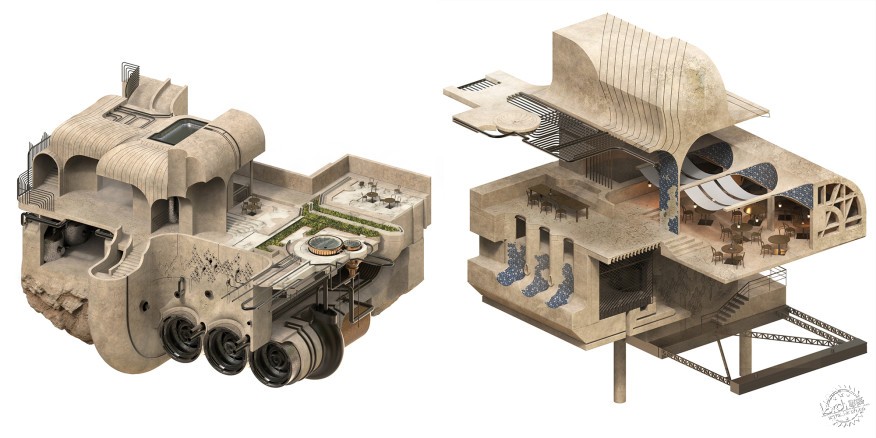
Alexander Tahinos and Angela Huang

Alexander Tahinos and Angela Huang
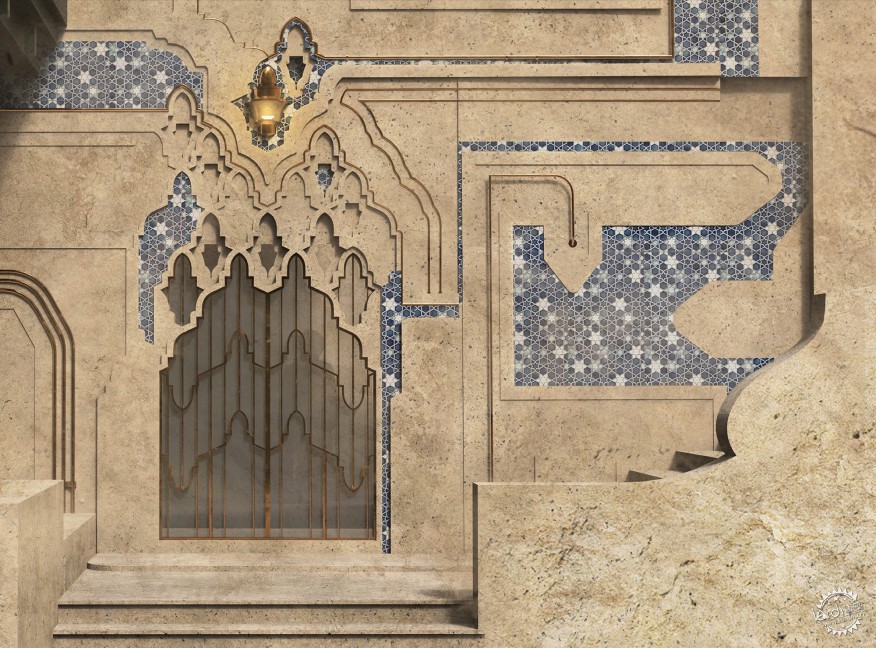
Alexander Tahinos and Angela Huang
码头花园
Angel Tahinos和Angela Huang重新构思了Qasr Al Nil 大桥的西岸,通过增加了楼梯和坡道的方式连通现有的海滨长廊,以后这里将设有咖啡馆和零售店。原码头遗址被重建为办公室,河岸景观由河流中的涡轮机灌溉而形成,原有的古典花园限制公众进入,今后将会对所有居民开放。
Pier Gardens
Alexander Tahinos and Angela Huang reimagined the western landing of the Qasr Al Nil Bridge, adding stairs and ramps to open up the existing waterfront promenade, which would be supplemented by cafés and retail (previous page). Decommissioned piers are recast as offices, topped by wild gardens irrigated by turbines in the river. Sited near a classical garden that limits public entry, this garden would be accessible to all residents.

Angeliki Mavroleon and Rosanne Pitarresi
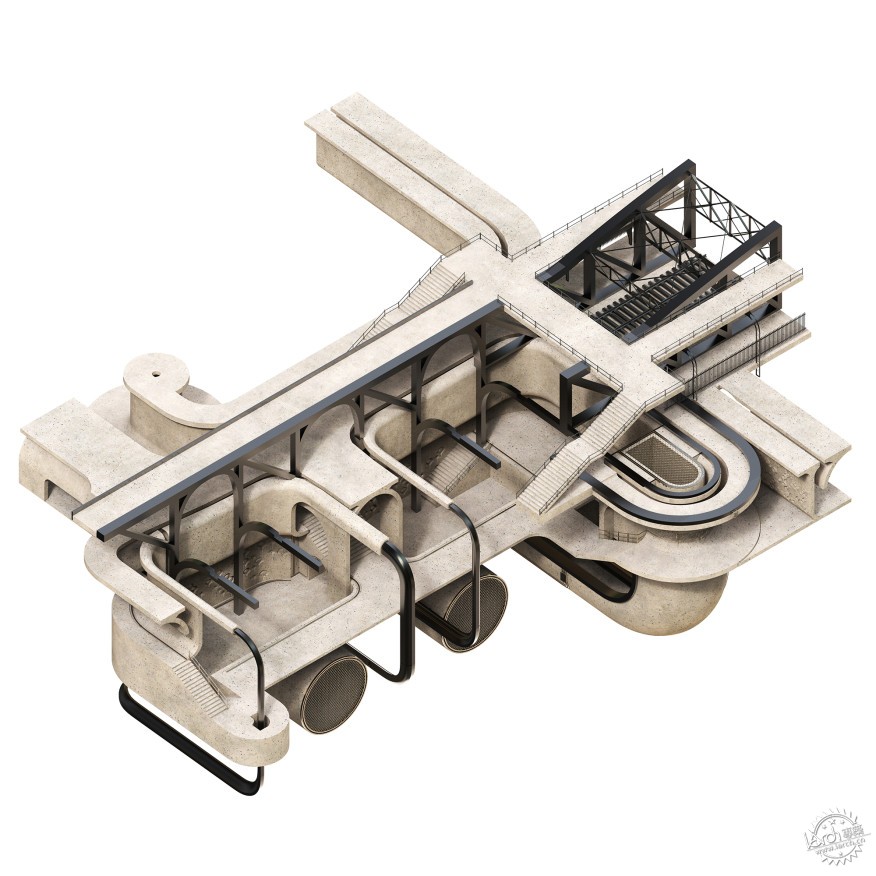
Angeliki Mavroleon and Rosanne Pitarresi

Angeliki Mavroleon and Rosanne Pitarresi
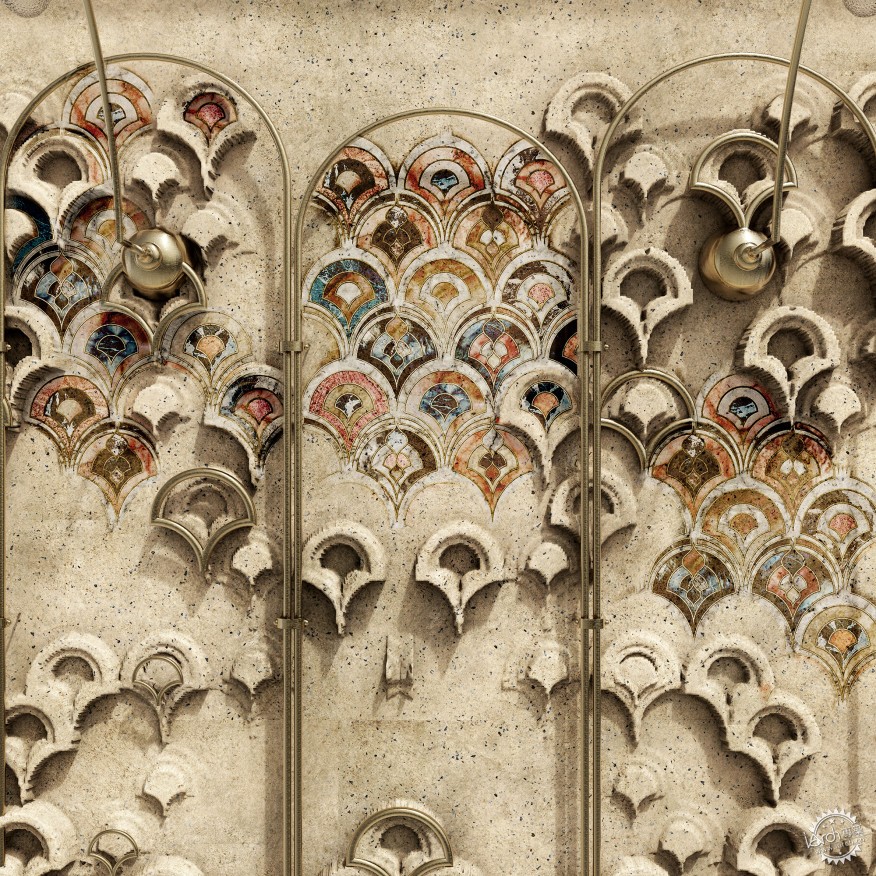
Angeliki Mavroleon and Rosanne Pitarresi
铁路集市
Angeliki Mavroleon和Rosanne Pitarresi建议重新利用Imbaba大桥下方的空间,这里可作为集市,为铁路结构增添了第二个用途,同时为行人提供安全的人行通道。设计者在桥梁与尼罗河岸相交的地方利用天窗将天然光线引入地下空间。
Railway Bazaar
This proposal from Angeliki Mavroleon and Rosanne Pitarresi carves out space beneath the Imbaba Bridge that serves as a bazaar, both to add a second use to the railway structure and to provide safe pedestrian access across it, which does not exist today. Skylights bring natural light into a subterranean space, which sits at the point where the bridge meets the bank of the Nile.

Meari Kim and Kyuhun Kim

Meari Kim and Kyuhun Kim
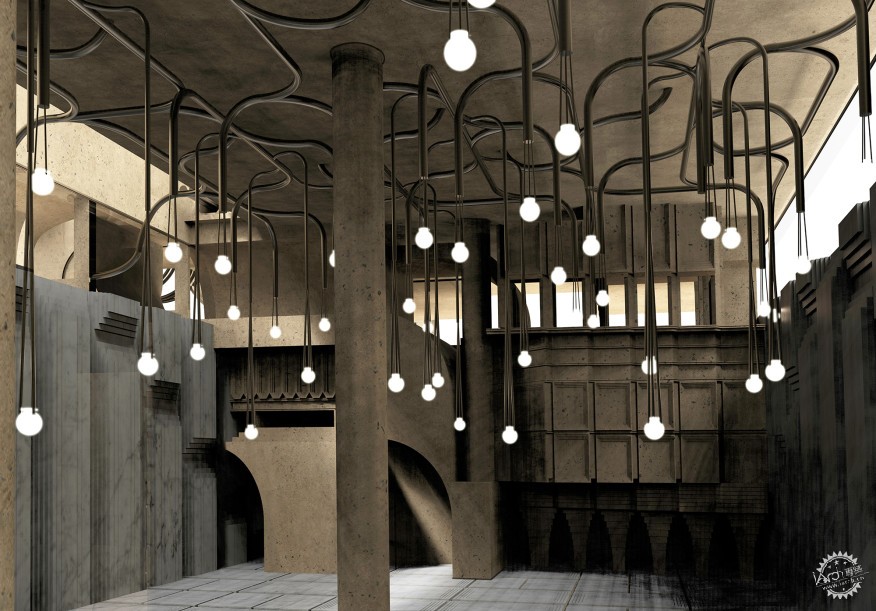
Meari Kim and Kyuhun Kim
超大桥
Meari Kim和Kyuhun Kim则认为应改造大桥,让车辆进入开罗市中心,他们利用太阳能板式公共汽车遮阳篷的原理,从而形成更多的庇护空间,同时有助于重新布置车行道的流线。改造方案座落在新办公大楼之上,同时连接不同层次的交通和基础设施,为行人提供更好的步行环境。桥下的闲置空间被改造为一个表演剧场,使当前混乱的交叉空间转变为一个文化区域。
Over-Under Bridge
Meari Kim and Kyuhun Kim’s proposal reconfigures the landing of the 6th of October Bridge, a main vehicular artery into downtown Cairo. Their solar-paneled bus canopy provides shade and helps reorganize chaotic bus lanes; it sits at the base of a new office tower that connects the different levels of traffic and infrastructure, providing safer connections for pedestrians than the current conditions. An empty space under the bridge is converted into a new performance space that makes what is now a chaotic intersection into a cultural destination.
工作室信息:
课题: “虚构”的开罗
学校:宾夕法尼亚大学设计学院
年级:三年级硕士研究生
学期:2017年春季学期
导师:Edward Ford, AIA (建筑学教授);Luis Pancorbo (助理教授)
助理教师:Michael Zimmerman
学生:Alexander Tahinos, Angela Huang, Meari Kim, Kyuhun Kim, Angeliki Mavroleon, Rosanne Pitarresi (已提交项目); Aly Abouzeid, John Dade Darby, Carrie Rose Frattali, Angeliki Tzifa, Kaikang Shen, Jianbo Zhong Special Thanks: Eng. Ibrahim Mehlib, Dr. Laila Iskandar, Eng. Mohamed Abu Saeda, Dr. Gihane Zaki, Dr. Haby Hosney, Aly Abouzeid, Ahmed Zaazaa
Studio Credits
Course: Real Fictions Cairo (Design Research Studio)
School: University of Pennsylvania, School of Design
Level: M.Arch., without preprofessional degree (year three) and Master of Science in Design, Advanced Architectural Design, postprofessional degree
Duration: Spring 2017 semester
Instructor: Ferda Kolatan (associate professor of practice, coordinator of design research studies)
Teaching Assistant: Michael Zimmerman
Students: Alexander Tahinos, Angela Huang, Meari Kim, Kyuhun Kim, Angeliki Mavroleon, Rosanne Pitarresi (submitted projects); Aly Abouzeid, John Dade Darby, Carrie Rose Frattali, Angeliki Tzifa, Kaikang Shen, Jianbo Zhong Special Thanks: Eng. Ibrahim Mehlib, Dr. Laila Iskandar, Eng. Mohamed Abu Saeda, Dr. Gihane Zaki, Dr. Haby Hosney, Aly Abouzeid, Ahmed Zaazaa
出处:本文译自www.architectmagazine.com/,转载请注明出处。
|
|
